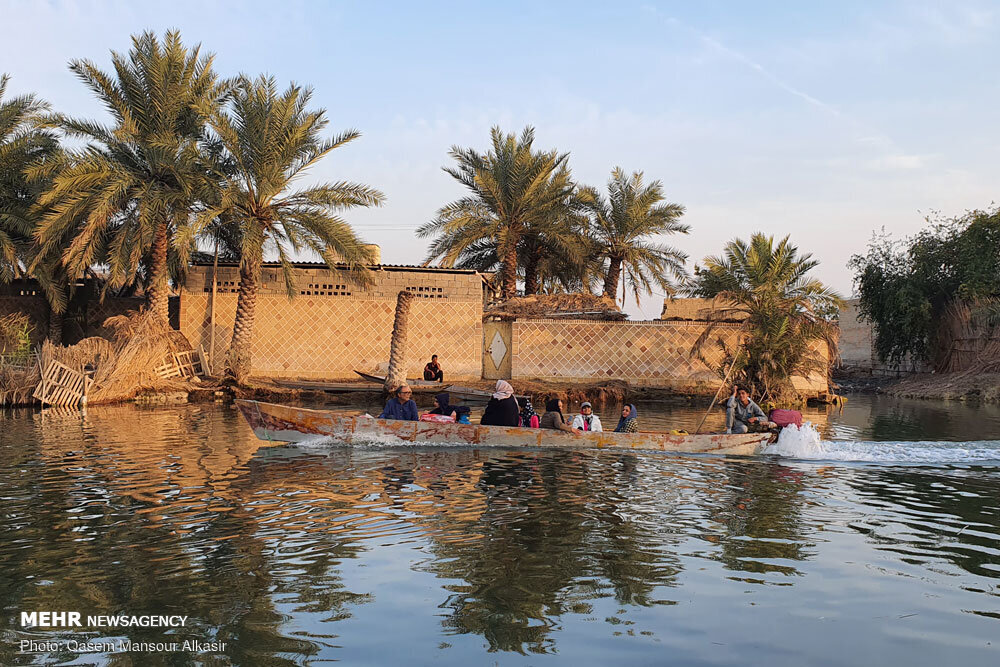Iran’s ‘Venice’, a lesser-known, must-see tourist destination

There is hardly anyone who has never heard of Italy's Venice, the stunning city on the water, with rivers instead of alleys, but on the other hand, it is hard to find anyone who has heard of the Iranian village of Sarakhyeh, known as Iran’s Venice.
Situated in the middle of Shadegan wetland in the southwestern province of Khuzestan, Sarakhyeh is a top destination for the wetland's tourists, who also want to witness slices of southern Iranian customs and traditions.
To pass through the village, villagers and tourists need to use a kind of wooden boat, known as Balam. Tourists also could rent boats to wander around the wetland and enjoy its natural beauties.
Sheltering different species of native and migratory birds, the village and its surrounding areas is a haven for birdwatchers. Furthermore, it is home to buffalo herds, which are captivating for nature lovers.
The best season to visit the village is in winter when the weather is cool and mild. Tourists could also try swimming in the wetland while visiting the village if the tour guides ensure the safety of the area.
The villagers have prepared some pergolas with basic facilities for accommodation for the tourists; however, the travelers could stay in the nearby cities overnights.
The Arabic-speaking inhabitants try to promote their village as a tourist destination so they can earn their living through tourism; however, there is still a long way ahead to get to that point.
The tourism infrastructure in the region, however, needs to be developed and basic facilities are necessary to be provided to attract more domestic and even foreign tourists.
Shadegan wetland covers 530,000 hectares, 400,000 hectares of which has been designated as a Ramsar site (defined by the Ramsar Convention for the conservation and sustainable use of wetlands, recognizing the fundamental ecological functions of wetlands and their economic, cultural, scientific, and recreational value).
Khuzestan is home to three UNESCO World Heritage sites of Susa, Tchogha Zanbil, and Shushtar Historical Hydraulic System yet it is a region of raw beauty where its visitors could spend weeks exploring. The province is also a cradle for handicrafts and arts whose crafters inherited from their preceding generations.
Lying at the head of the Persian Gulf and bordering Iraq on the west, Khuzestan was settled about 6000 BC by a people with affinities to the Sumerians, who came from the Zagros Mountains region. Urban centers appeared there nearly contemporaneously with the first cities in Mesopotamia in the 4th millennium. Khuzestan, according to Encyclopedia Britannica, came to constitute the heart of the Elamite kingdom, with Susa as its capital.
ABU/AFM
Leave a Comment